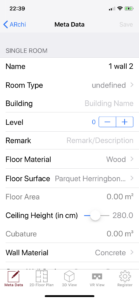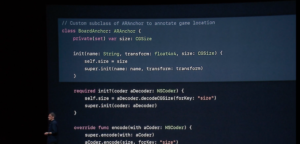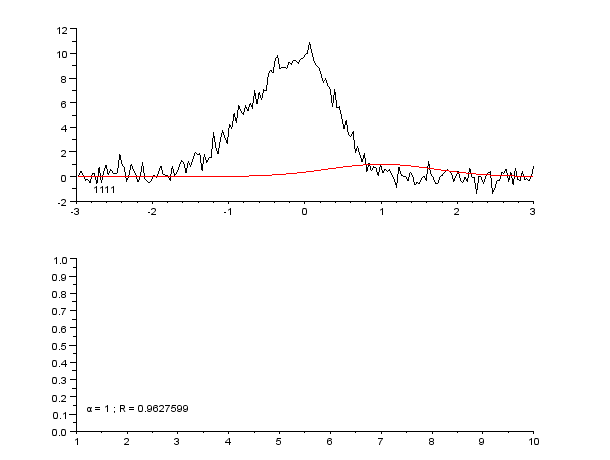AR App using registration technologies
With the availability of the AR registration technologies in the leading mobile platforms, the implementation of an own AR registration implementation lost its attractiveness. The idea is to implement an App to demonstrate and discover the potential and problems of applying this technology.
There is a lot of potential in applying the AR world map recovery, which all goes in the direction of the hyped AR cloud. Plenty of indoor use cases can be imagined, especially in the public domain.
In a public building, like a school or in a railway station, the ability to share AR experiences has a huge potential. Use cases include:
- Navigation
- Explanations
- Application instructions
- Time tables
- Meeting points
- Point of interest
- Content generation/community
- Information about objects
- Sharing of information
- Explanations with dynamic depth (first level information, with more in depth information on demand)
- Evacuation
The application should provide ways to load a AR experience for a certain location, either automatic or over user selection. The loaded AR experience should be consumable, editable and enhanceable. This means:
- You can navigate the environment getting augmented information about objects and locations
- You can post information on a table or any other real world object
- You can add information to already existing information
The AR experience should be shared ideally in real time.
Just like that
Ausgleichungsrechnung – Wikipedia
react-native-ar/react-native-arkit
react-native-ar/react-native-arkit
react-native-arkit – React Native binding for iOS ARKit
World map registration
Experimenting with world map registration on iOS 12 beta showed encouraging results.
I experimented with adapting the ARchi VR application, https://archi.metason.net. The world map registration part has been implemented in a separate iOS Framework, which was linked into the App.

In a registration view, the user is able to rotate the recorded walls, move all walls and edit individual points.
When loading a world map, during re-localisation, a screen shot is shown to the user to help find the right spot for ARKit to reload the scene.

After successful re-localisation, multiple tools are available to manually adapt the scene, to adde elements and to save the data and the world map.

Code available in ZHAW github (protected): https://github.engineering.zhaw.ch/u39575/ARchiVR.
Planning – to the end
Mid August – Mid November
Demo App for AR Cloud, indoor, e. g. navigation, info sharing. Details will be laid out separately.
Mid November
Decide if we can write a short paper for Eurographics https://www.eg.org/, 2019 https://www.eurographics2019.it/, short papers https://www.eurographics2019.it/index.php/for-submitters/short-papers/:
| December 14, 2018 | Submission deadline |
Mid January
Official demo app
React Native vs. Real Native Apps — Which is Better?
React Native vs. Real Native Apps — Which is Better?
React Native vs. Real Native Apps — Which is Better?

Mobile app development is soaring high with Statista predicting that mobile applications will generate approximately $189 billion in…
Source: hackernoon.com/react-native-vs-real-native-apps-which-is-better-a8383d6f7ca5
Automatic Reference Counting — The Swift Programming Language (Swift 4.2)
Automatic Reference Counting — The Swift Programming Language (Swift 4.2)
Swift uses Automatic Reference Counting (ARC) to track and manage your app’s memory usage. In most cases, this means that memory management “just works” in Swift, and you do not need to think about memory management yourself. ARC automatically frees up the memory used by class instances when those instances are no longer needed.
Source: docs.swift.org/swift-book/LanguageGuide/AutomaticReferenceCounting.html
Inside SwiftShot: Creating an AR Game

Developed by Apple, SwiftShot is an energetic and immersive multiplayer AR game built with key iOS technologies. Glimpse behind the curtain and see how SwiftShot was designed and developed using ARKit, SceneKit, and Swift. Understand the intricacies of designing great gameplay for AR, and learn practical techniques for multiplayer synchronization and physics simulation.
WWDC 2018 – Session 605 – iOS
Magic Leap One im Test
Echt, aber nicht echt genug
Magic Leap One im Test: Echt, aber nicht echt genug

Das viel gehypte Start-up Magic Leap hat die Entwicklerversion seiner Augmented-Reality-Brille fertiggestellt. Haben sich die Milliardeninvestitionen gelohnt?
Source: www.heise.de/tr/artikel/Magic-Leap-One-im-Test-Echt-aber-nicht-echt-genug-4131933.html


